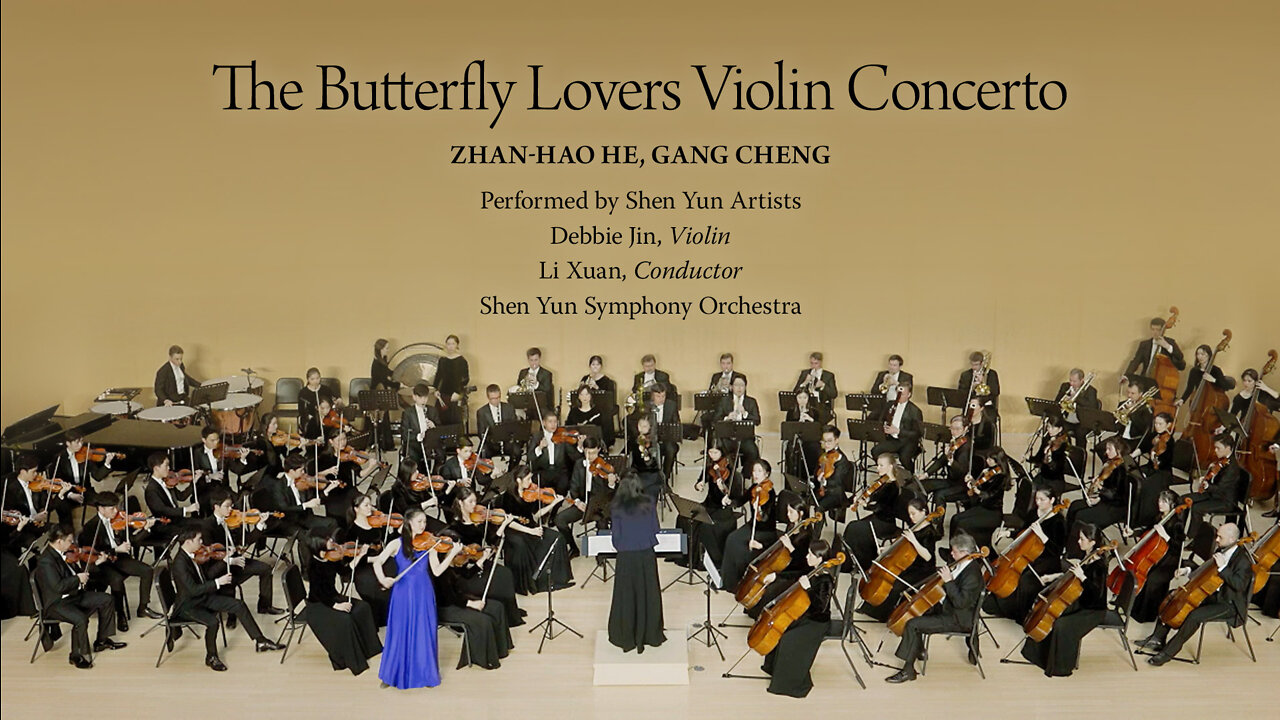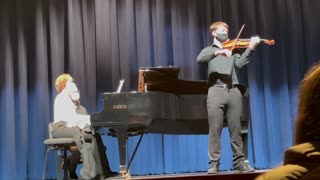Premium Only Content

The Butterfly Lovers Violin Concerto
The Butterfly Lovers Violin Concerto is one of the most well-known classical Chinese concert pieces. During the 20th century, classical works and operas from the West were introduced to the East. The idea of writing for a Western orchestra soon blossomed in China and The Butterfly Lovers, composed by He Zhanhao and Chen Gang, is one of the more successful works to have emerged from that era.
The Butterfly Lovers is divided into three sections that correlate to a Chinese folk tale. Set during the Eastern Jin Dynasty (266-420 C.E.), it tells of two people—Liang Shanbo and Zhu Yingtai. The traditional beliefs of predestined relationships (yuanfen) and fate play a big role in their story. The first section, Adagio Cantabile, begins with the main theme, which originated from a type of Chinese folk opera called Yue opera (yueju).
He and Chen knew how widely appreciated folk music and different branches of Chinese opera were throughout the country, so they adapted some characteristics of yueju into the orchestration. The violin was also written to represent three traditional instruments: erhu, pipa, and guzheng. Throughout the piece, the violin is the feminine voice of Zhu Yingtai and the main theme is a depiction of her childhood and innocence.
At the time when this story is set, girls were not allowed to attend school, and so Zhu disguises herself as a boy and makes her way over to an academy. This is where she (still in disguise) meets her classmate, a dashing young man named Liang. The cello, acting as Liang, appears in the music, intertwining with the violin in a beautiful duet underscoring their friendship and devotion.
As in the tale, the buoyant music moves on, showing Liang and Zhu’s three years of diligent studies; all the while, deep emotions develop between them. When their studies end they have to part, but not before promising each other to meet again.
The second section, Pesante-Piu mosso-Duramente, marks the moment of despair when, upon returning home, Zhu discovers that her father has already arranged for her to marry a man from a rich family. The solo violin launches into tearful chords, contending with the orchestra as Zhu tries again and again to argue with her father against the marriage. In the midst of this, Liang arrives and discovers that Zhu is, in fact, a girl. Liang is doubly shocked when he learns of her betrothal. Another duet of violin and cello appears, depicting Liang and Zhu’s unfulfilled promise to each other, which then quickly spirals into a presto section.
Chinese percussion instruments often used together in yueju lead the orchestra into a series of fast running notes, illustrating Liang’s pain and torment. His grief overwhelms him, and after falling ill, he passes away.
The shrill of the violin depicts Zhu’s cries as she kneels by Liang’s grave. The sliding notes on the violin imitate techniques used on the erhu. With a dramatic crescendo on the cymbal and a resounding gong, Zhu is swallowed by the grave.
The last section, which brings us back to Adagio Cantabile, is a recap of the original main melody from the first movement. Here, the whole violin section plays the melody on muted strings, portraying the scene where Liang and Zhu turn into butterflies and fulfill their destiny together.
-
🔵Watch The Full Episode 👉https://ept.ms/ButterflyLoversViolinConcerto
-
Shen Yun Performing Arts is the world’s premier classical Chinese dance and music company.
Shen Yun Creations are available at ShenYunCreations.com.
Follow ShenYunCreations on social media:
Facebook: https://www.facebook.com/shenyuncreations/
Instagram: https://www.instagram.com/shenyuncreations/
Twitter: https://twitter.com/ShenYunCreation
Gettr: https://gettr.com/user/sycreations
Gab: https://t.me/ShenYunCreations
-
 1:01
1:01
NTD Features
4 days agoDOJ Claws Back Authority From ATF to Decide Gun-Rights Restoration for Americans |Trailer
911 -
 14:36
14:36
Hallagan
3 years ago $0.06 earnedAidan J. Watts, Goldmark Violin Concerto No. 1
295 -
 8:08
8:08
PirateRoger
3 years agoVivaldi - Violin Concerto in F minor
78 -
 LIVE
LIVE
Keepslidin
1 hour ago$5000 START | ROAD TO 100K | Mother.land
108 watching -
 LIVE
LIVE
2 MIKES LIVE
3 hours ago2 MIKES LIVE #210 Open Mike Friday!
125 watching -
 13:18
13:18
T-SPLY
9 hours agoFBI Arrest Democrat Judge For Protecting Illegal Immigrant!
33.9K54 -
 UPCOMING
UPCOMING
Mally_Mouse
20 hours agoLet's Play!! -- More Dreamlight Valley!
1.14K -
 1:36:46
1:36:46
RiftTV/Slightly Offensive
5 hours ago $7.20 earnedTrump SHUTS DOWN War with Iran! Bibi IN RAGE | Guest: Joel Webbon | The Rift Report
49.2K24 -
 1:30:19
1:30:19
Jamie Kennedy
20 hours agoThe Illusion of Time, Portals, and Paranormal Activity | Ep 203 with Jay Wasley of Ghost Adventures
36.1K7 -
 14:34
14:34
Bearing
12 hours agoUK Transgender Protesters are NUTS 🦄⚧🏳️⚧️
33.4K40